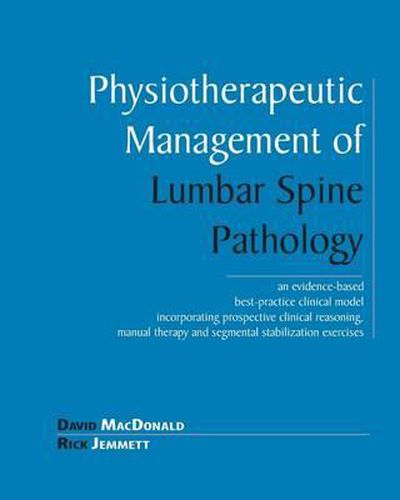Readings Newsletter
Become a Readings Member to make your shopping experience even easier.
Sign in or sign up for free!
You’re not far away from qualifying for FREE standard shipping within Australia
You’ve qualified for FREE standard shipping within Australia
The cart is loading…






Authors Rick Jemmett and David MacDonald deliver a rigorously argued, academically-sound and clinically relevant model of assessment, classification and management for patients with lumbar spine pathology. Acknowledging the problems and limitations inherent in the traditional pathoanatomical and biopsychosocial models, the authors’ Segmental Dysfunction Model provides for a significantly more predictable approach to patient management while retaining a modern physical therapy skill set. Underpinned by the most recent research from a variety of disciplines, the authors have modeled an evidence-based pathomechanical definition of lumbar dysfunction with management solutions grounded in prospective clinical reasoning, therapeutic motor re-education exercises and updated manual therapy applications. The result is a re-conceptualization of low back pain which allows clinicians to appreciate the nature and extent of their patient’s dysfunction and provide more consistent and successful patient management.
$9.00 standard shipping within Australia
FREE standard shipping within Australia for orders over $100.00
Express & International shipping calculated at checkout
Authors Rick Jemmett and David MacDonald deliver a rigorously argued, academically-sound and clinically relevant model of assessment, classification and management for patients with lumbar spine pathology. Acknowledging the problems and limitations inherent in the traditional pathoanatomical and biopsychosocial models, the authors’ Segmental Dysfunction Model provides for a significantly more predictable approach to patient management while retaining a modern physical therapy skill set. Underpinned by the most recent research from a variety of disciplines, the authors have modeled an evidence-based pathomechanical definition of lumbar dysfunction with management solutions grounded in prospective clinical reasoning, therapeutic motor re-education exercises and updated manual therapy applications. The result is a re-conceptualization of low back pain which allows clinicians to appreciate the nature and extent of their patient’s dysfunction and provide more consistent and successful patient management.